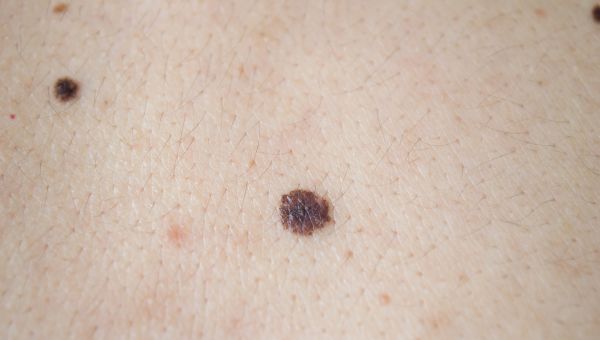How to keep melanoma from coming back
Four proven strategies to lower your chances of getting skin cancer again.
Updated on April 5, 2024

If you've been diagnosed and treated for melanoma, you might be concerned that more tumors will develop. It's a valid concern—according to the American Cancer Society, you have a better chance of getting melanoma if you've had it already. Melanoma is a type of skin cancer that develops from cells that make the pigment responsible for skin color. While it is an uncommon type of skin cancer, melanoma can grow and spread throughout the body quickly.
There may not be much you can do to prevent a recurrence of the original melanoma, but you can help reduce your risk of developing a second, new type of cancer.
So, what can you do to lower your odds? Try these four steps.

Limit UV exposure
The biggest environmental danger to your skin is ultraviolet (UV) radiation from the sun. There are several ways you can limit your exposure. If you can, stay indoors or in the shade between 10 a.m. and 4 p.m., when UV rays are strongest. Also, cover up with sun-protective clothing (long sleeves and long pants or long skirt), a wide-brimmed hat and sunglasses. And be sure to use a broad-spectrum sunscreen with a sun protection factor (SPF) of 30 or higher. Apply sunscreen before you go outside, and every couple of hours when you are outside. Don't skip sunscreen on cloudy days, or in winter.

Do monthly skin checks
Give yourself a thorough full-body skin check once a month. Do the exam in bright light using both a full-length mirror and a handheld mirror, so you can check your back and all around your arms and legs. Use a hair dryer to help check your scalp. Ask someone else to help for areas that are hard to see.
Make sure to note any moles that have changed in appearance in a notebook or a phone app. Take pictures if possible, to better see changes over time. If a spot has changed, make sure to contact your healthcare provider (HCP).

Know the warning signs
Be diligent about looking for signs of trouble, following the ABCDE guidelines from the American Cancer Society:
- Asymmetry: Do both halves of the mole match, or are they uneven?
- Border: Are the edges of the mole smooth, or are they bumpy, jagged or otherwise irregular?
- Color: Are there patches of pink, red, blue or white in the mole? Is the color consistent throughout, or does it change?
- Diameter: How big is the mole? Is it bigger than 1/4th of an inch?
- Evolving: Has the mole changed?
Remember that the symptoms of a cancer that has come back (recurrence) or a new type of cancer could be different. They could show up in the same spot, on nearby skin or somewhere else in your body, such as a lump or swelling. Since a recurrence might grow somewhere else, like in your lungs or brain, look for symptoms that don't affect the skin, like pain, fatigue and coughing. If you find a spot that concerns you, or have any unexplained symptoms, talk to your HCP.

Check in with your HCP
After your treatment is over, it's important to keep your follow-up appointments, even when you don't have any symptoms. Depending on specific aspects of your melanoma, you may need follow-up physical exams, perhaps every three months or maybe once a year; your schedule will be specific to you. Your HCP may also recommend follow-up imaging tests, such as chest x-rays or CT scans (which use x-rays and computers to take a detailed picture of the inside of your body). Keeping in touch with your HCP can help you stay healthy.
More On


video

article

slideshow


video


video
